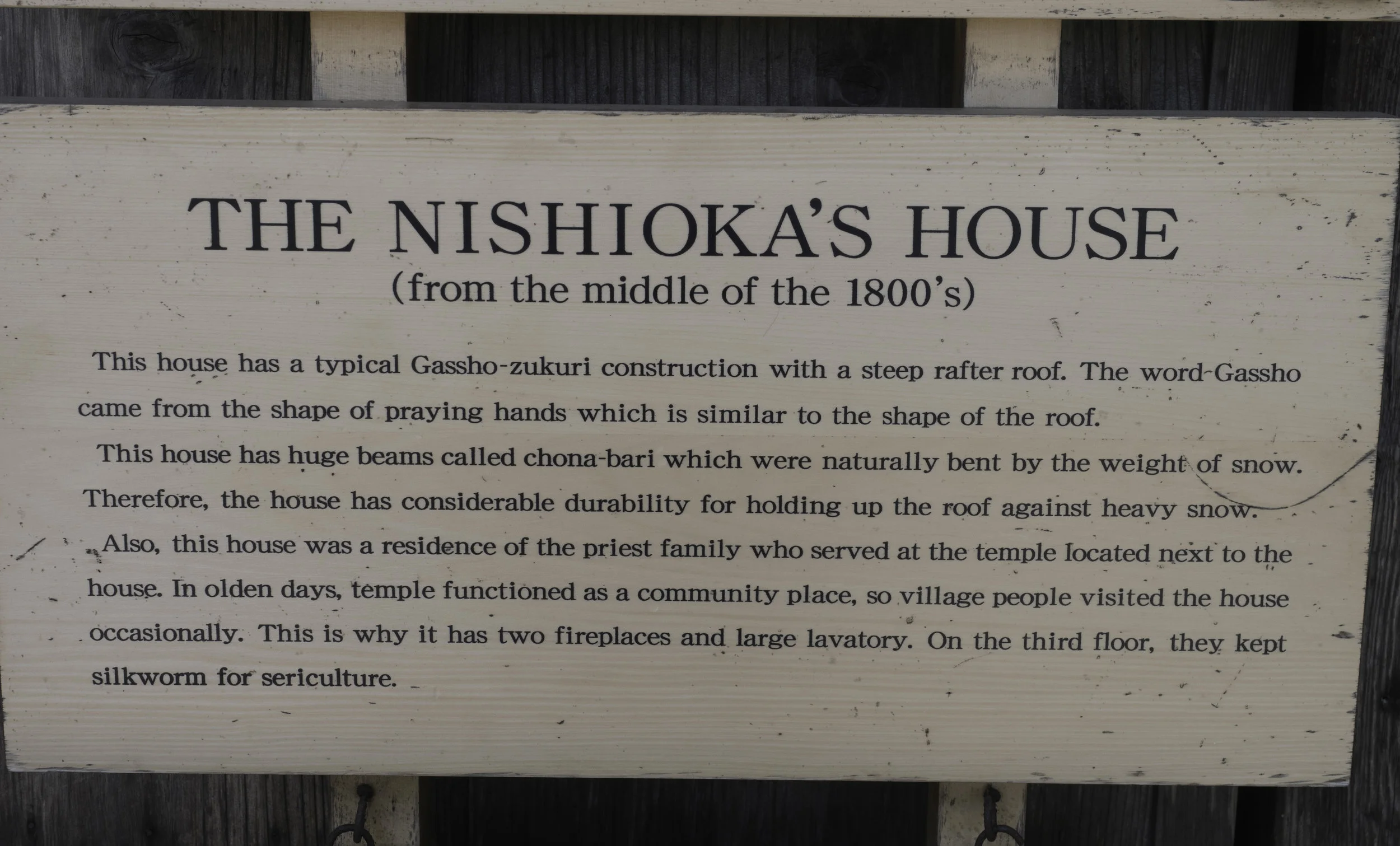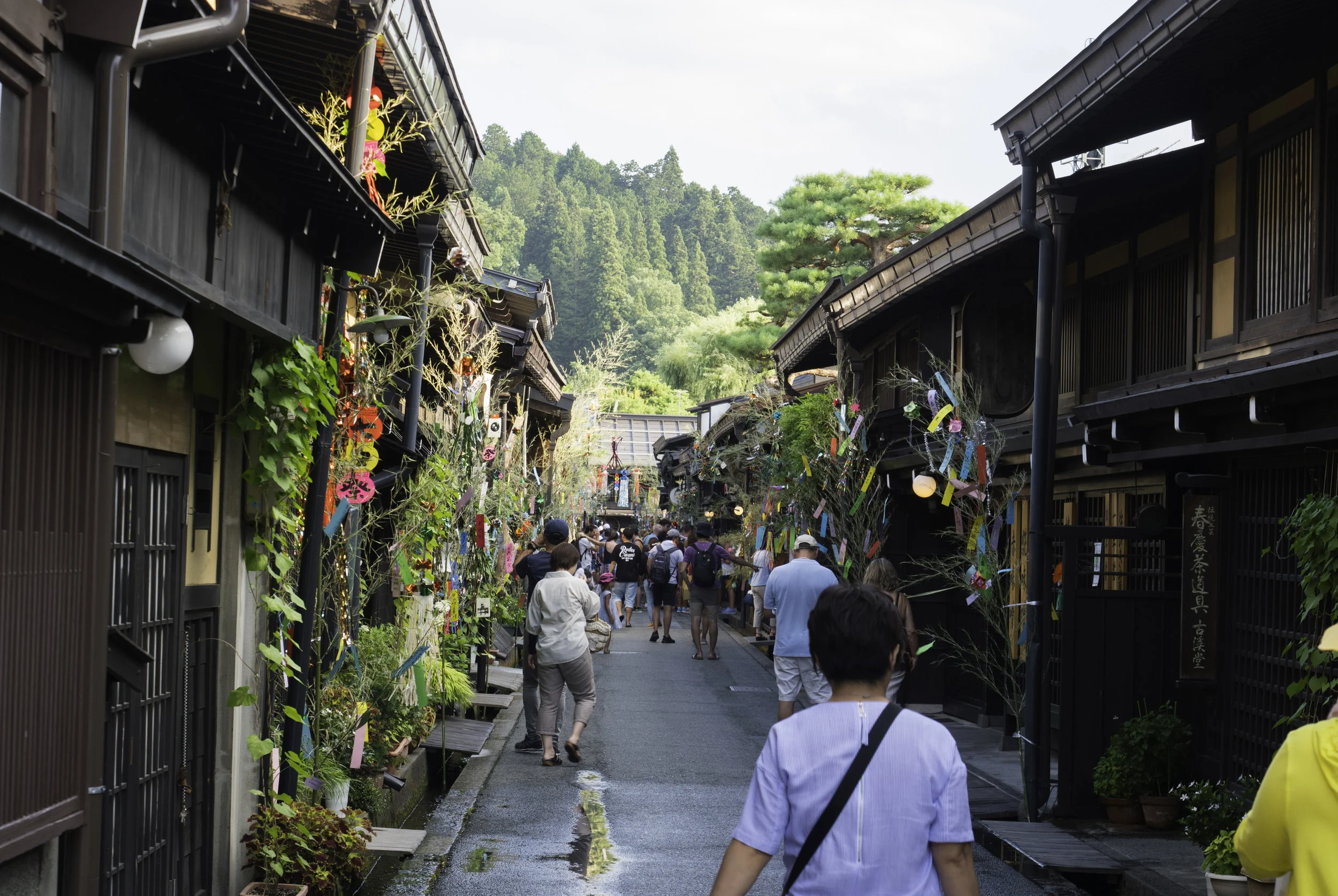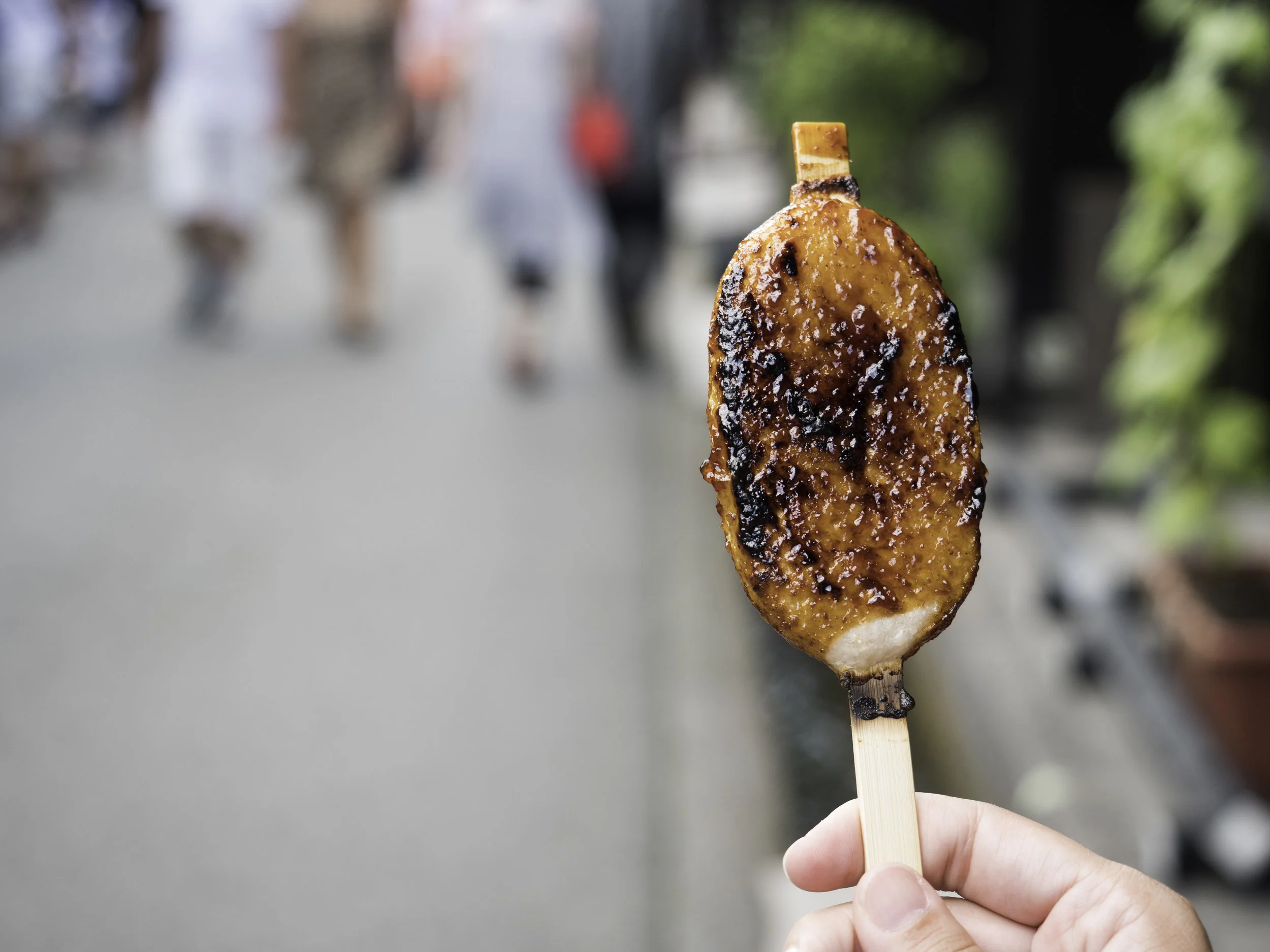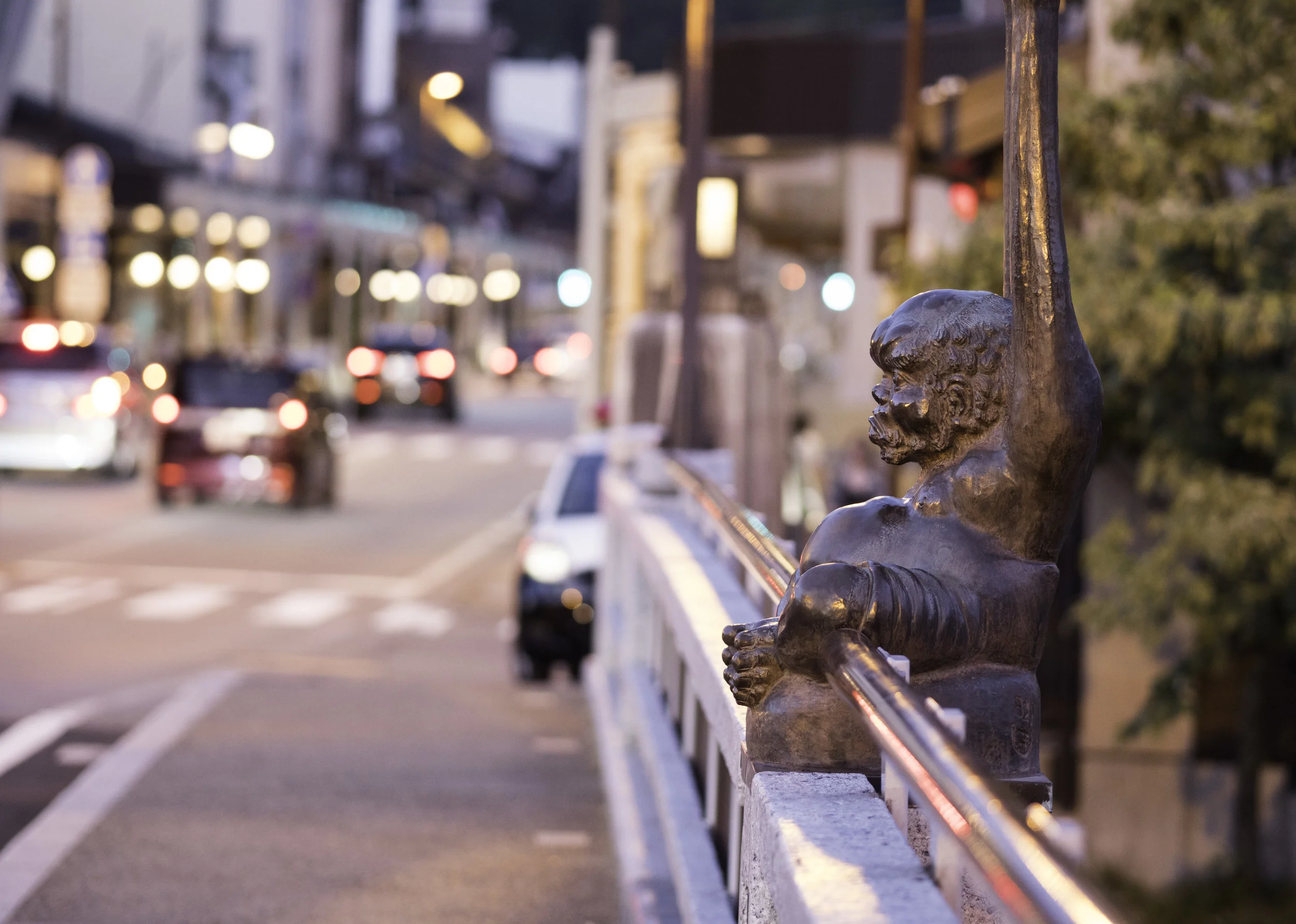Takayama (How could we not think of a pun?! We’ve been pun-ished)
August 5-6, 2018
We had a small setback on our way to our next city, Takayama, as we found out the day before that all the train lines we had planned to take (on the Shinkansen of course) were out of service because of heavy rains and mudslides earlier this month. We would have to take a bus, but aside from the stress, it turned out fine and we still made it there in a couple hours.
Hida Folk Village
One of weavers at the Hida Folk Village
Our first stop here was to the Hida Folk Village. This area is full of old thatched roof homes and shops from different time periods and areas of this region of Japan. Walking through we could see all the different types of construction and how different roofs and styles of houses were unique to specific areas. There was also areas where we watched craftsman weaving or carving wood. We are noticing that between Kanazawa and here, this area of Japan seems to have a lot of various crafts that they have historically made. There are shops and studios to see woodworking, lacquer wear, paper making, and weaving everywhere.
Next, we walked through another area with preserved historic homes-Sanmuchi Saji. We have to say that eventually a lot of these homes and old buildings are really starting to all blur, but they are still beautiful to look at and have held up for such a long time. These are from the same time period as those in Kanazawa and we were reading that many are still original as this area didn’t suffer damage during WWII. While exploring this area we also stopped for our first sake tasting and really enjoyed trying all the different kinds and noting how different they all were. It isn’t a drink we often think to order back home, but that may change.
The Sanmuchi Saji area.
After looking up what food this area is known for we were surprised to find that burgers were on many lists, so of course that’s what we set out to find for dinner. What made them unique was that they were made from Hida beef and almost had the texture of steak.
The next morning, we went to the Miyagawa morning market, where they were selling fresh produce, flowers, and souvenirs. Among the souvenirs we noticed that there is a red doll with no face that is everywhere here. We looked it up and they are good luck dolls that grandmothers would often make for their grandchildren to bring them health and good luck. Now they are pretty much a symbol for this city and are sold everywhere. There were different colors for different luck as well, red being for health and family.
Miyagawa morning market
The beautiful floats of Takayama.
We stopped by the Sakurayama Hachimangu shrine and temple, which is the oldest in Takayama. Then, we went to the festival exhibit hall where we were able to see several floats used in the city’s festivals. Takayama holds two festivals a year, where these elaborate carriage and floats go through the streets right from this hall. The floats are rotating every four weeks to show all of them, and there are over 20 total used in the parade. Some have to be carried by teams of 40 people, while others have huge wheels. They also have mechanisms to adjust their heights so they can go under the telephone wires. There were also a few small, more plain carts on display that end up being used for the festivals during rain or bad weather to protect the floats and we found it funny to picture attending one of these massive festivals to be disappointed when a small cart came out instead of the elaborate one you were expecting.
Next door was another museum which held 1/10 scaled models of the most important shrines and temples of the region. It was crazy to see all the details on each model down to every painting, tile, and roof shingle. According to the sign on one of them it took 33 carpenters and 15 years to make that specific model!
We took another walk through the historic homes area and found another food unique to this area, beef nigiri. This was rare, thickly cut Hida beef on top of rice and was served an a rice paper plate so you could eat it and have no waste-ingenious!
After we saw as much as we could of the old homes, we decided to take a bus out to the Shin-Hotaka Ropeway. The bus ride took us through winding roads in the mountains and it was amazing. This area is known as the Alps of Japan and we could see why. This area is known for a full of it’s hot springs and onsen but unfortunately we didn’t have time for that one his trip. Instead we headed to the Ropeway to head to the viewpoint. It was actually two Ropeway, the second one being our first double-decker cablecar! From the top, it was a bit cloudy but the views were still stunning. It was also a lot cooler which we were very thankful for. On the bus ride down while marveling at the views, we also saw a monkey hanging out on the side of the road!
The top of the Shin-Hotaka Ropeway.
We had dinner at a ramen shop which had only three things on the menu: ramen, ramen with wontons, and a side of wontons. We feel like it’s always a good sign when restaurants stick to one item and we were right! We then stopped at a sake bar and the bartender made us a cocktail with orange limes and gave us a sake tasting, again we were amazed at the variety! We were chatting with him a bit and ending up telling him about how we got a fortune earlier but it was all in Japanese. He translated as much as he could to us and we learned that it is a good time for us to buy a house and have babies so it sounds like we better start saving some money.
Takayama was a nice break from the city, but we are now headed to our final stop on this 5 week journey-Tokyo! We are sure the contrast will be drastic. We are glad we got to explore a couple smaller cities and relax a bit with the mountain views of this area.
























































































































